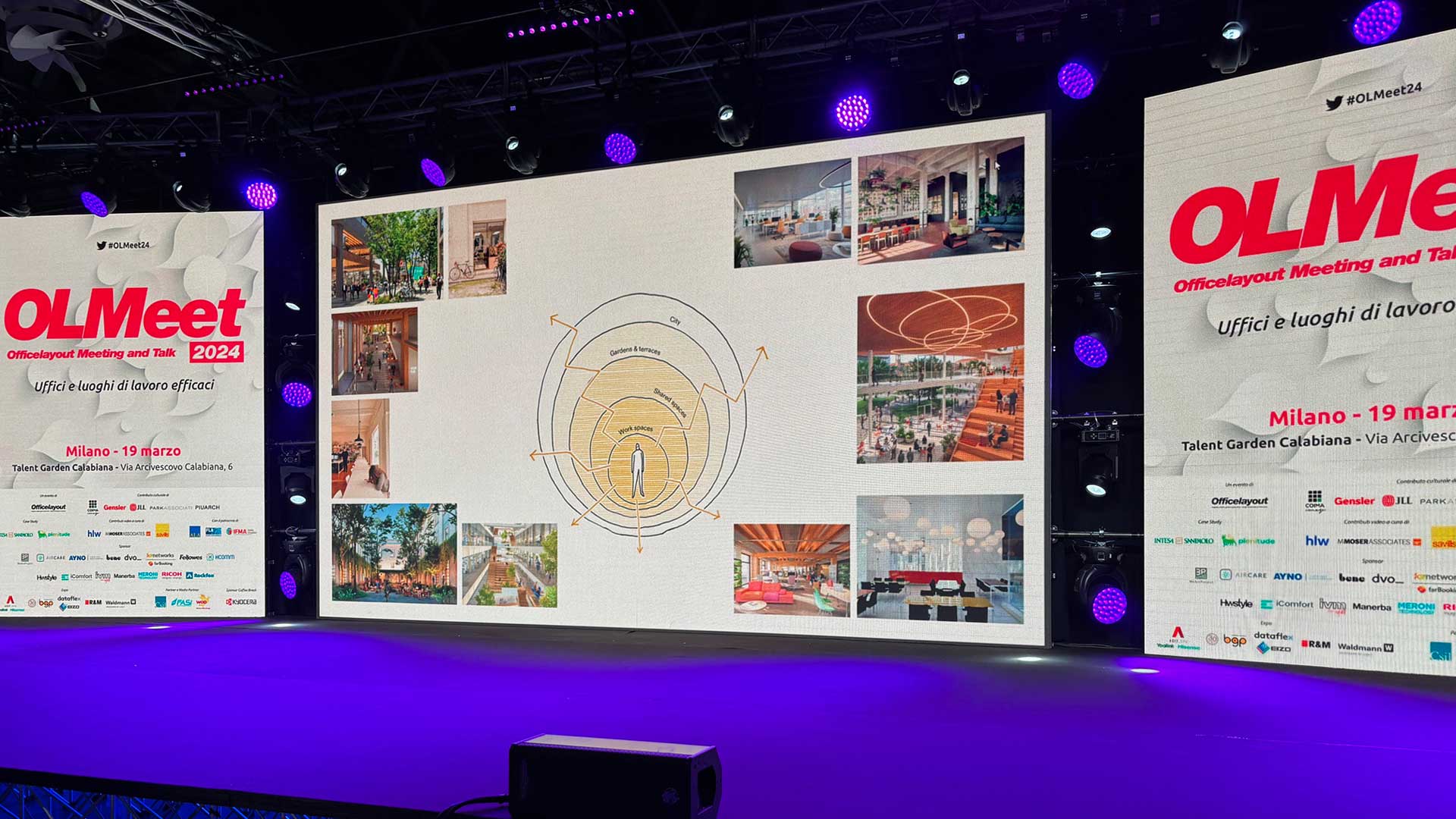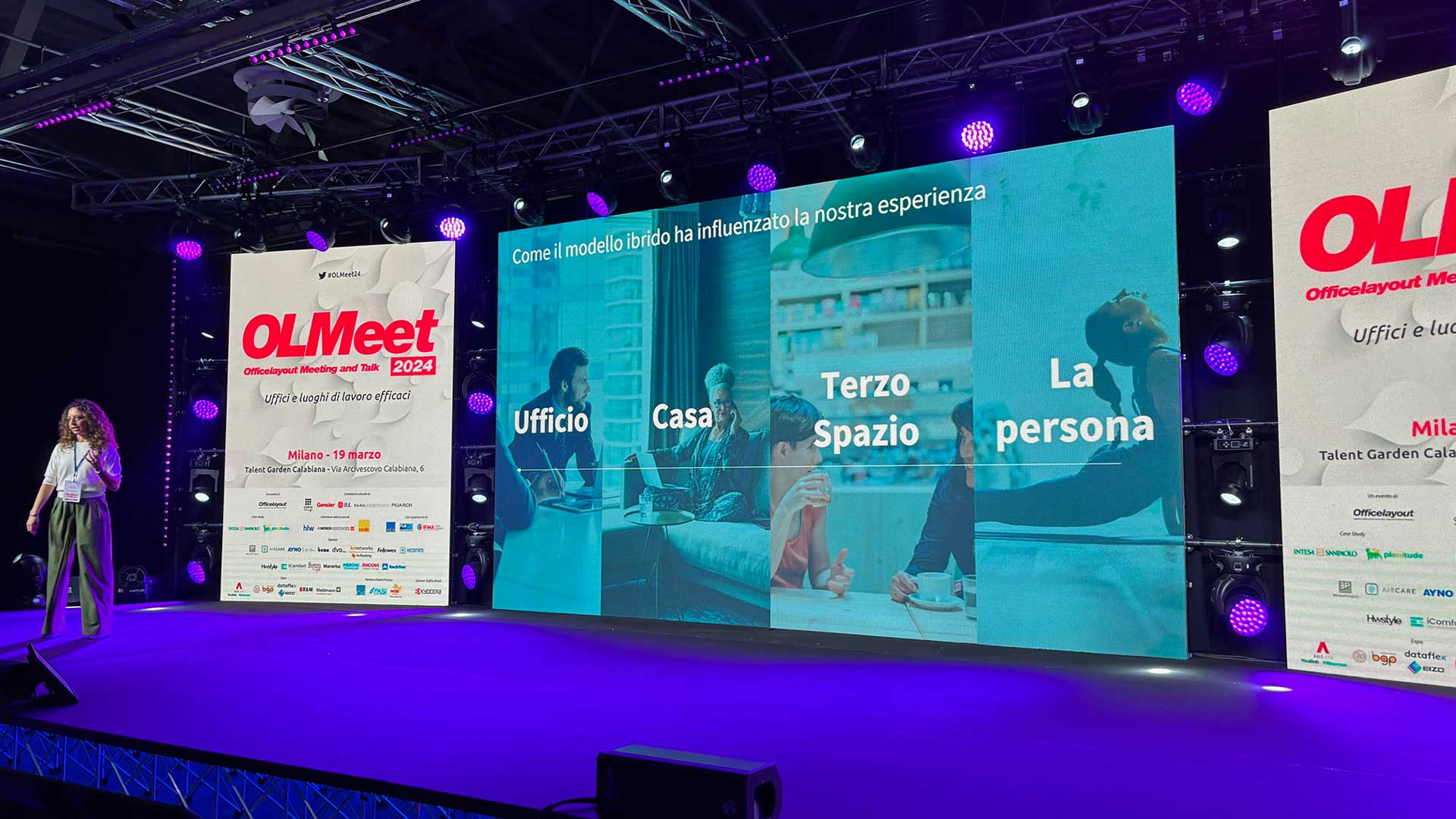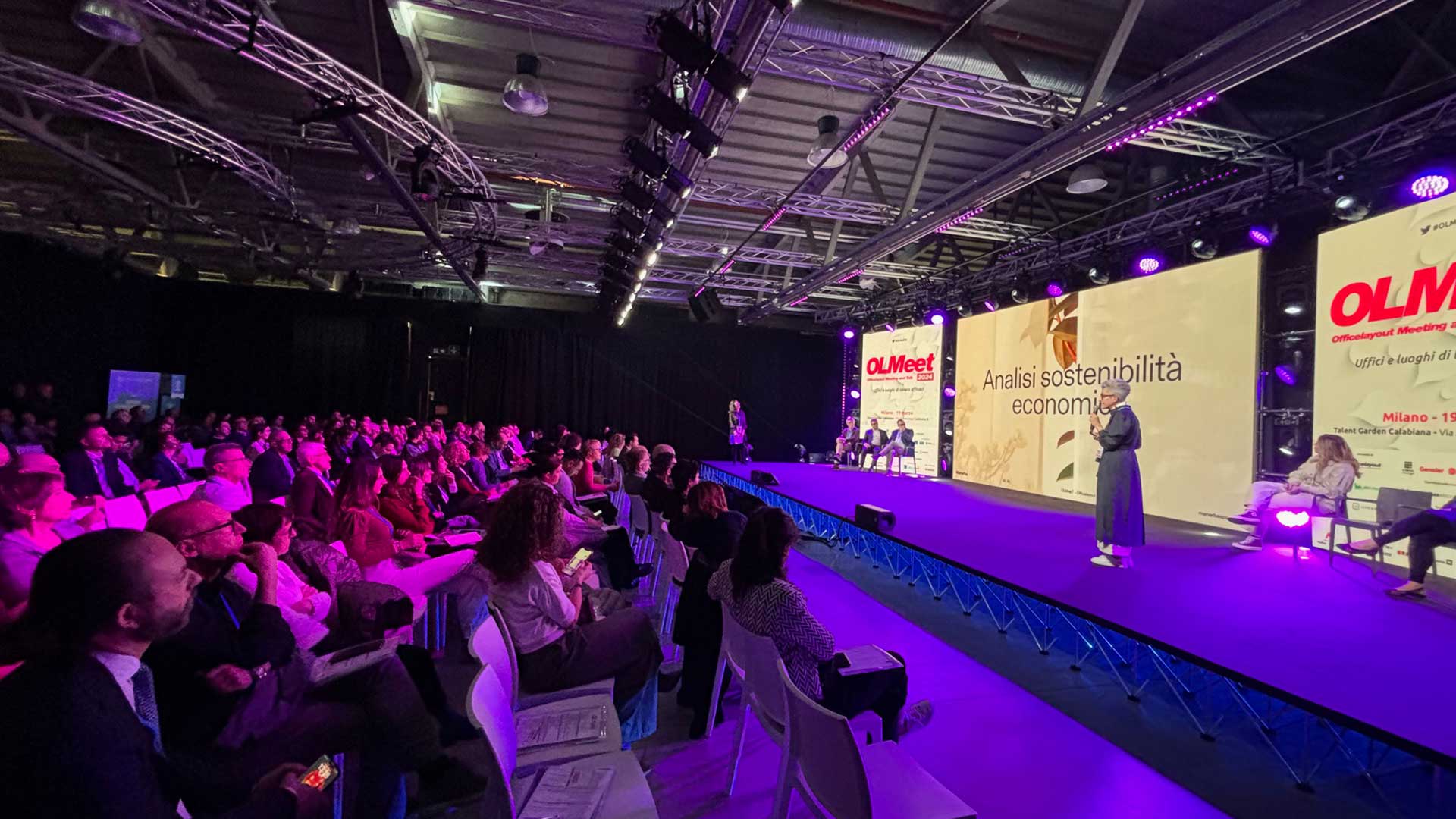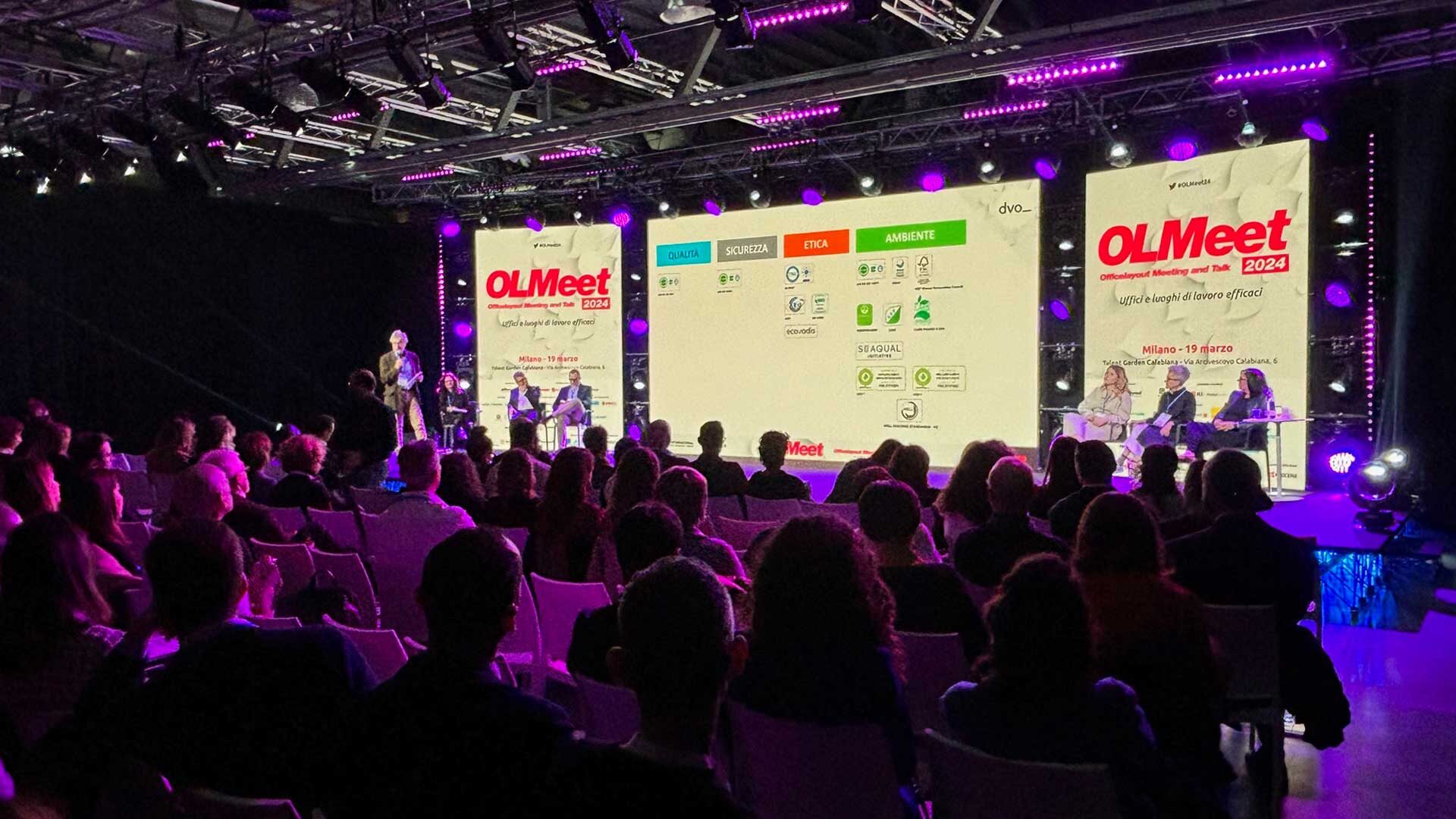The latest edition of the Olmeet conference organized by Soiel International in Milan highlighted the change in workplaces towards a compelling office, designed to make employees love the headquarters again.
The Olmeet New Edition
On March 19th, Level Office Landscape attended the latest edition of Olmeet, an event organized by Soiel International that brought together companies and professionals who work in the field of workplace design. This year the event was hosted by Talent Garden, a coworking space dedicated to numerous events and workshops, where people can build their network and dedicate time to personal education. A multidisciplinary spirit that best reflects the contemporary evolution of offices, which are conquering the so-called “third places”, libraries, schools and hospitality spaces.
User Centered Design in Olmeet

The common thread of the summit was the wellbeing of workers, increasingly at the center of workplace design. The growing attention to psycho-physical wellbeing leads to the creation of comfortable environments, often similar to domestic ones. Designers and companies work hand in hand and new modes of expression are born with welcoming and functional spaces which, in terms of layout, furnishings and materials, are reminiscent of home niches. The office is increasingly alive and made aesthetically pleasant from a design point of view to attract employees who have become accustomed to working from their home, exploiting the potential of remote working.
The New Ways of Working Presented in Olmeet

According to the data presented at Olmeet, isolated work is decreasing, in favor of collaborative activities linked to moments of socialization. Likewise, training is increasingly crucial within structured companies, which have understood the change in priorities of new generations of workers. Investing in teaching therefore proves successful in offering both professional and personal growth prospects for employees, thus promoting loyalty towards the employer.
In this scenario, spaces dedicated to interaction are raising their value. The meeting rooms can be easily reconfigured according to the needs of the workers and the purpose of the meeting. Even small shared spaces and ones delimited by movable partitions can become perfect areas dedicated to informal meetings. Sometimes a few poufs, sofas, armchairs and a white board are enough to create comfortable areas, capable of stimulating the creativity of the work group. To favor interaction, elements that resemble theater rooms are increasingly widespread, with steps and small arenas where people can sit and listen to presentations, talks and speeches. A recent example is the agora that Level Office Landscape created inside the new headquarters of Bene Assicurazioni.
The desk, however, still represents a personal universe although, in many cases, it is no longer assigned, but open to the free use of employees who arrive at the office on that particular day. Its requirements are still linked to functionality and ergonomics and, increasingly, to design and aesthetics.
Olmeet 2024: the Office Becomes a Compelling Destination

With the advent of hybrid work and the attention to the balance between personal and professional life, the office has become a destination, no longer an obligation. Many workers voluntarily choose to go there, without being obliged anymore, as happened before 2020. Therefore, the design component and conscious planning make the headquarters more attractive and allow companies to call collaborators back to the headquarters.
The aim is to stimulate the culture of belonging, giving priority to the human experience, through Human Centered Design. A thought that applies above all to the new generations, attentive and sensitive to issues such as mental health, inclusion, gender equality and sustainability (social and environmental): characteristics that impact on the choice of the company to work for.
The workplace thus becomes a flexible ecosystem full of areas inspired by the living room, conference rooms, niches for focus work and meeting rooms. Third places are also increasingly being added, with spaces borrowed from hospitality and services related to body care such as company gyms. All designed with mindfulness in mind, together with attention to sensory stimuli, bright environments and scents. The so-called “Sensory Office” plays on the choice of colors and materials to give harmony to the workplace and stimulate the well-being of those who live there every day.
The Connection with the City
When a company chooses its headquarters, it also takes into account the position within the urban fabric. The headquarters should be central and easily reachable by public transport: this is why the future of the workplace is linked to our cities. As reiterated by Olmeet 2024, the office is increasingly becoming a compelling destination: attractive and unique. In short, a place where it’s worth going to work. Those who have understood how to put people at the center, are already enjoying an effective and productive workplace, where they can enhance today’s talents and cultivate those of tomorrow.
